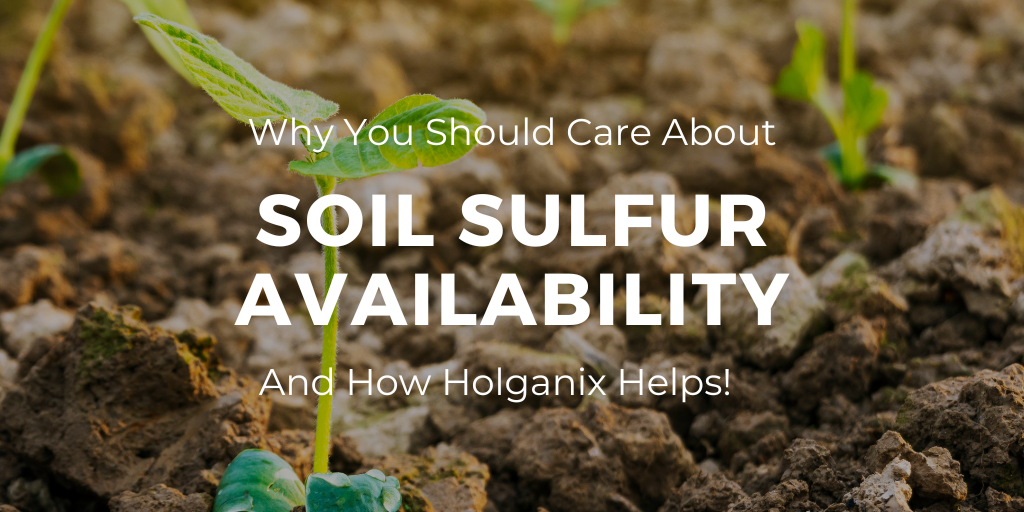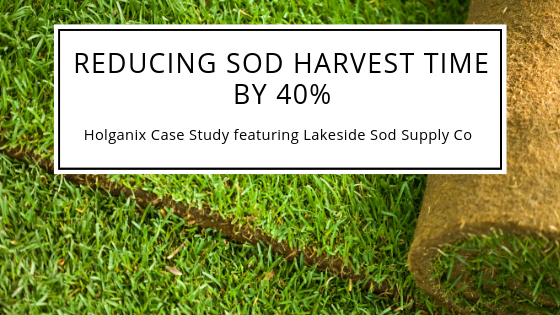 Commonly referred to as the “4th major nutrient”, sulfur is an essential nutrient in crop production. Sulfur is responsible for many tasks such as chlorophyll formation, promoting nodulation in legumes (i.e. soybeans, navy beans, peanuts, green peas), helping support plant growth through the formation of amino acids, proteins, and oils, and activating enzymes and vitamins.
Commonly referred to as the “4th major nutrient”, sulfur is an essential nutrient in crop production. Sulfur is responsible for many tasks such as chlorophyll formation, promoting nodulation in legumes (i.e. soybeans, navy beans, peanuts, green peas), helping support plant growth through the formation of amino acids, proteins, and oils, and activating enzymes and vitamins.
Sulfur: A Limiting Nutrient in Crop Production
Lately, sulfur has become more important as a limiting nutrient in crop production. This is because higher crop yields require more sulfur, there are fewer sulfur impurities in modern fertilizers, we use fewer sulfur-containing pesticides, and we have reduced industrial sulfur emissions to the atmosphere.
According to the Sulfur Institute, “Historically crops got their sulfur from the environment via sulfur dioxide (SO2) gas from industrial processes entering the sulfur cycle in large quantities.” However, between 1990 and 2019, North American emissions have been reduced by 90%.
This reduction was an important thing since sulfur dioxide (SO2) can lead to the formation of acid rain, but a significant reduction in these emissions had an unusual effect on modern agriculture by limiting the sulfur in the soil.
While there is sulfur already present in the soil, approximately 95% of soil sulfur is unavailable to plants. Specific bacteria genera are required in order to release the sulfur to the plant in a usable form. These genera include Acidovorax, Comanomas, Enterobacter, Polaromonas, Pseudomonas, Rhodococcus, Drttaytia, Salmonella and Thiobacillus.
Sulfur is most often released in the soil at the rhizosphere (where the roots of the plant are). When sulfur is released away from the rhizosphere, plants rely on mycorrhizae fungi to absorb available sulfur and transport it to the plant.
How does Holganix Bio 800+ agriculture Release Sulfur to the Plant?
Holganix Bio 800+ Agriculture contains over 800 species of diverse soil microbes to promote crop yield, build soil health, and reduce the need for fertilizer, among other benefits. Specific genera of bacteria found in Bio 800+ include Acidovorax, Comanomas, Enterobacter, Polaromonas, Pseudomonas, Rhodococcus, Drttaytia, Salmonella and Thiobacillus. These bacteria are responsible for releasing sulfur into the plant.
“Applications of Holganix Bio 800+ Agriculture products to soil containing bound sulfur will result in the release of sulfur to the plant in an available form,” explains Robert Neidermyer, Ph.D. and Director of Soil and Plant Science at Holganix.
Further, Holganix Bio 800+ Agriculture contains mycorrhizae fungi. “The plant and mycorrhizae form a mutualistic relationship whereby the plant produces sugars through photosynthesis and exudes them out of the roots for mycorrhizae and other beneficial microbes to consume. In turn, mycorrhizae bring water and nutrients (including sulfur!) to the roots from distances the root cannot reach.”
Which microbes are found in Bio 800+?
Which other microbes are found in Bio 800+? Bio 800+ is filled to the brim with beneficial soil microbes, microbe food, and nutrient enhancers to build HEALTHIER plants that need less fertilizer. Download the Bio 800+ ingredient list to access our key ingredients and find out what those key ingredients can do for your plants.

 |
June 16, 2022
|
2:00 PM
|
June 16, 2022
|
2:00 PM
-2.jpg)
-1.jpg)
-1.jpg)
-1.jpg)
.jpg)

-2.jpg)
-1.jpg)
-1.jpg)
-1.jpg)
.jpg)






.webp)
-1%20(1).webp)
-831535-2.webp)



-2.png)
-2.png)
